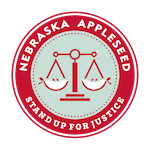 The recent death of a 12 year old boy in Omaha, allegedly at the hands of his mother, who had called HHS seeking information about placing him in foster care, has raised questions about the state’s investigation of child abuse reports. Not only had the boy’s mother called HHS, but family members reported that they repeatedly contacted HHS expressing concerns about the mother’s erratic behavior, alcohol abuse, and temper, but received no substantial reply. In response, HHS officials have said that they are reviewing their records from the case to make sure their procedures are working as intended in order to respond to reports about the safety of children.
The recent death of a 12 year old boy in Omaha, allegedly at the hands of his mother, who had called HHS seeking information about placing him in foster care, has raised questions about the state’s investigation of child abuse reports. Not only had the boy’s mother called HHS, but family members reported that they repeatedly contacted HHS expressing concerns about the mother’s erratic behavior, alcohol abuse, and temper, but received no substantial reply. In response, HHS officials have said that they are reviewing their records from the case to make sure their procedures are working as intended in order to respond to reports about the safety of children.
We hope HHS’s new CEO will do exactly that and create a much needed culture of transparency at the Department that will enable the state to learn from tragedies such as this one. Last year, the Legislature passed and the Governor signed LB 782 (codified at Neb. Rev. Stat. § 81-3126), which permits HHS to release information in child abuse cases if the disclosure is not contrary to the best interests of the child or the child’s siblings and one of six factors, including that the information is related to a child abuse fatality, is present. This is not the first occasion the Department has had to utilize this new law, but it seems an important opportunity to follow through on the intent of that measure.
It is always easier to say what could have been done after the fact. And differentiating those cases that could end in tragedy versus those families who may simply need additional support is often difficult. Yet, the system needs to get better at that very determination. In 2008, the Department initiated a new safety model, called the Nebraska Safety Intervention System (NSIS), which is an assessment tool caseworkers use to determine whether a “safety threat” exists and whether safety can only be assured by an out-of-home placement or whether the child can remain in the home with a safety plan in place. We think there are potential positive aspects of this approach and support the effort to reduce the high number of children in out-of-home care in Nebraska. However, in order for this new system to work, among other things, caseworkers need clear direction, intensive supervisory support, ongoing training, and manageable caseloads. Frontline workers are making life and death decisions. Resources as well as lives can be saved if the focus is increased on the front end to make and conduct accurate assessments and investigations.
